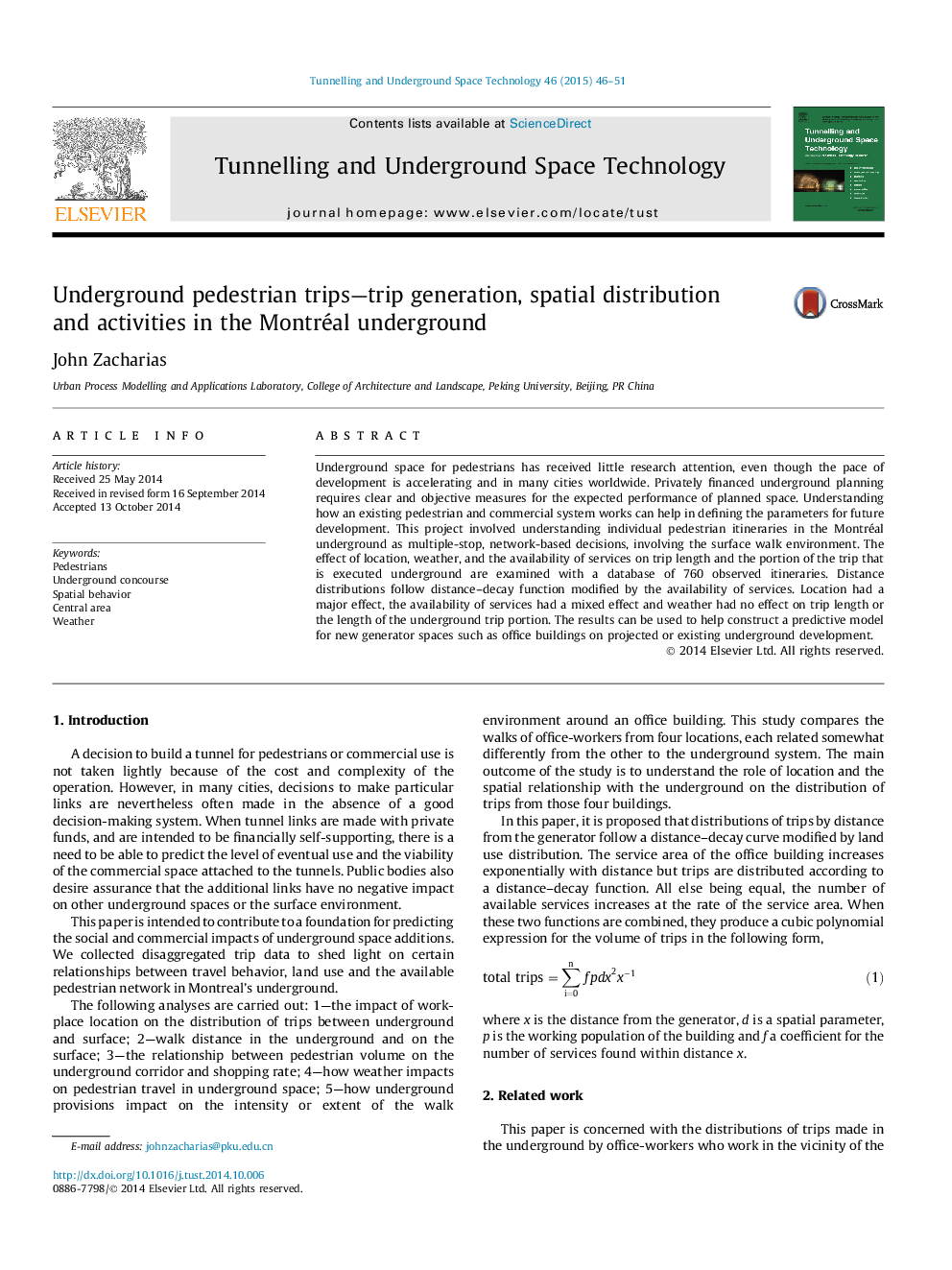| Article ID | Journal | Published Year | Pages | File Type |
|---|---|---|---|---|
| 6784111 | Tunnelling and Underground Space Technology | 2015 | 6 Pages |
Abstract
Underground space for pedestrians has received little research attention, even though the pace of development is accelerating and in many cities worldwide. Privately financed underground planning requires clear and objective measures for the expected performance of planned space. Understanding how an existing pedestrian and commercial system works can help in defining the parameters for future development. This project involved understanding individual pedestrian itineraries in the Montréal underground as multiple-stop, network-based decisions, involving the surface walk environment. The effect of location, weather, and the availability of services on trip length and the portion of the trip that is executed underground are examined with a database of 760 observed itineraries. Distance distributions follow distance-decay function modified by the availability of services. Location had a major effect, the availability of services had a mixed effect and weather had no effect on trip length or the length of the underground trip portion. The results can be used to help construct a predictive model for new generator spaces such as office buildings on projected or existing underground development.
Related Topics
Physical Sciences and Engineering
Earth and Planetary Sciences
Geotechnical Engineering and Engineering Geology
Authors
John Zacharias,
